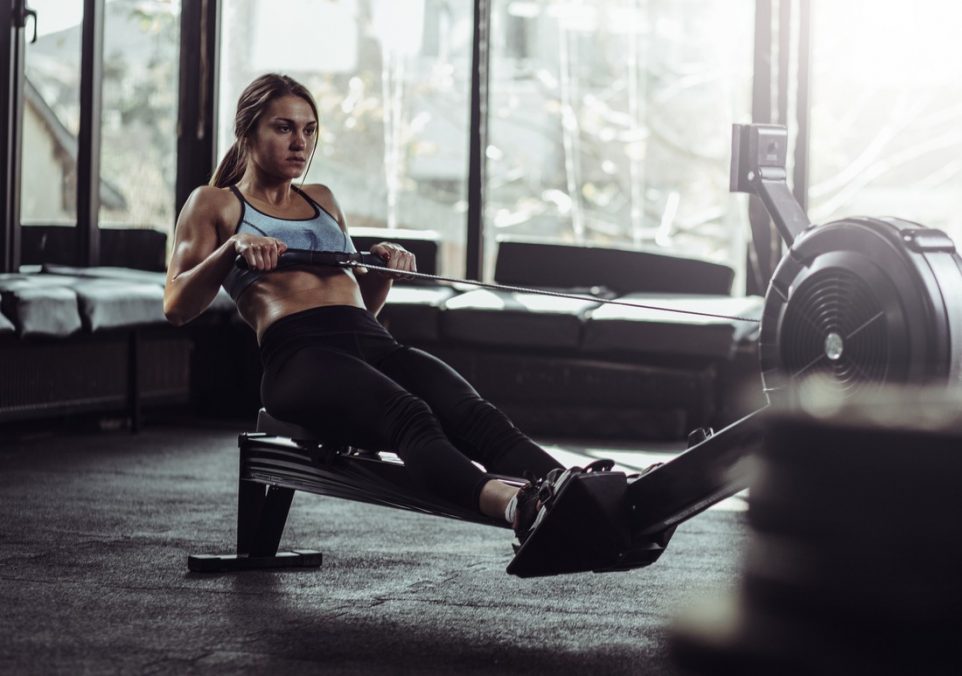How To Use a Rowing Machine Properly to Get the Most Out of Your Cardio Session

A rowing machine is a powerful tool for improving cardiovascular health and strengthening muscles across the body. It simulates the action of rowing a boat, engaging your arms, legs, and core in a smooth, continuous motion.
Why Use a Rowing Machine?
Rowing is an efficient way to burn calories, enhance stamina, and build muscle without the high impact on joints that you might experience with other forms of cardio like running. It’s particularly good for strengthening the back, shoulders, and arms, while also offering a significant workout to your lower body.
Understanding the Mechanics of a Rowing Machine
The key components of a rowing machine include the flywheel, footplates, handle, and the sliding seat. Each element plays a crucial role in the machine’s function:
1. Flywheel
The flywheel is the heart of the rowing machine, designed to provide resistance and simulate the feeling of rowing on water. In most machines, the resistance is created by air or magnets. As you pull the handle, the flywheel spins, creating resistance through air flow or magnetic fields. The intensity of this resistance can be adjusted using a lever or digital controls, commonly referred to as the damper setting.
- Air resistance flywheels work by increasing resistance the harder or faster you row, similar to the dynamic resistance experienced in actual water rowing.
- Magnetic resistance flywheels provide a quieter, smoother experience and typically allow for a more precise level of resistance control.
2. Footplates
The footplates are where you secure your feet during rowing. They are crucial for providing stability and proper force application throughout the rowing stroke. Proper adjustment of the footplates is essential to ensure that your feet are snug and secure, yet comfortable. The strap should ideally be positioned across the ball of your foot, allowing full flexion and extension of your ankles during the movement.
3. Handle and Chain
The handle is connected to the flywheel through a chain or belt and is the part of the machine you will interact with most directly. It’s essential to maintain a firm but relaxed grip to prevent fatigue in the hands and forearms. The quality of the chain or belt can affect the smoothness of the pull and the overall feel of the stroke. Maintaining a straight line in the chain from the flywheel to the handle throughout the stroke helps reduce wear and ensures consistent resistance.
4. Sliding Seat
The seat slides forward and backward on a track, allowing for the rowing motion. It’s important that the seat glides smoothly along the rail, as any friction or instability can disrupt your technique and reduce the effectiveness of your workout. The seat should be padded enough to provide comfort during long rowing sessions but firm enough to support efficient power transfer during the drive phase of the stroke.
5. Performance Monitor
Most rowing machines come equipped with a performance monitor that provides feedback on your workout. This can include data such as stroke rate, distance rowed, pace, and calories burned. Advanced monitors can offer heart rate monitoring and connectivity to apps that provide additional training programs and feedback. This data is invaluable for tracking progress over time and setting workout goals.
Setting Up Your Rowing Machine
Before you start, adjusting the rowing machine to fit your body is essential for both comfort and effectiveness. Ensure the foot straps are tight enough to secure your feet but not so tight as to cut off circulation. The seat should allow you to sit comfortably with your knees bent and arms extended without overreaching or cramping your posture.
Perfecting Your Rowing Technique
Rowing is divided into four primary phases: the catch, the drive, the finish, and the recovery.
Trustworthy Insights for You
With years of combined expertise in online publishing, OvertimeReviews embodies the lessons learned from SEO strategies to paid advertising experiences. We've navigated the highs and lows, and our goal remains clear: to equip readers with comprehensive information they can trust.
